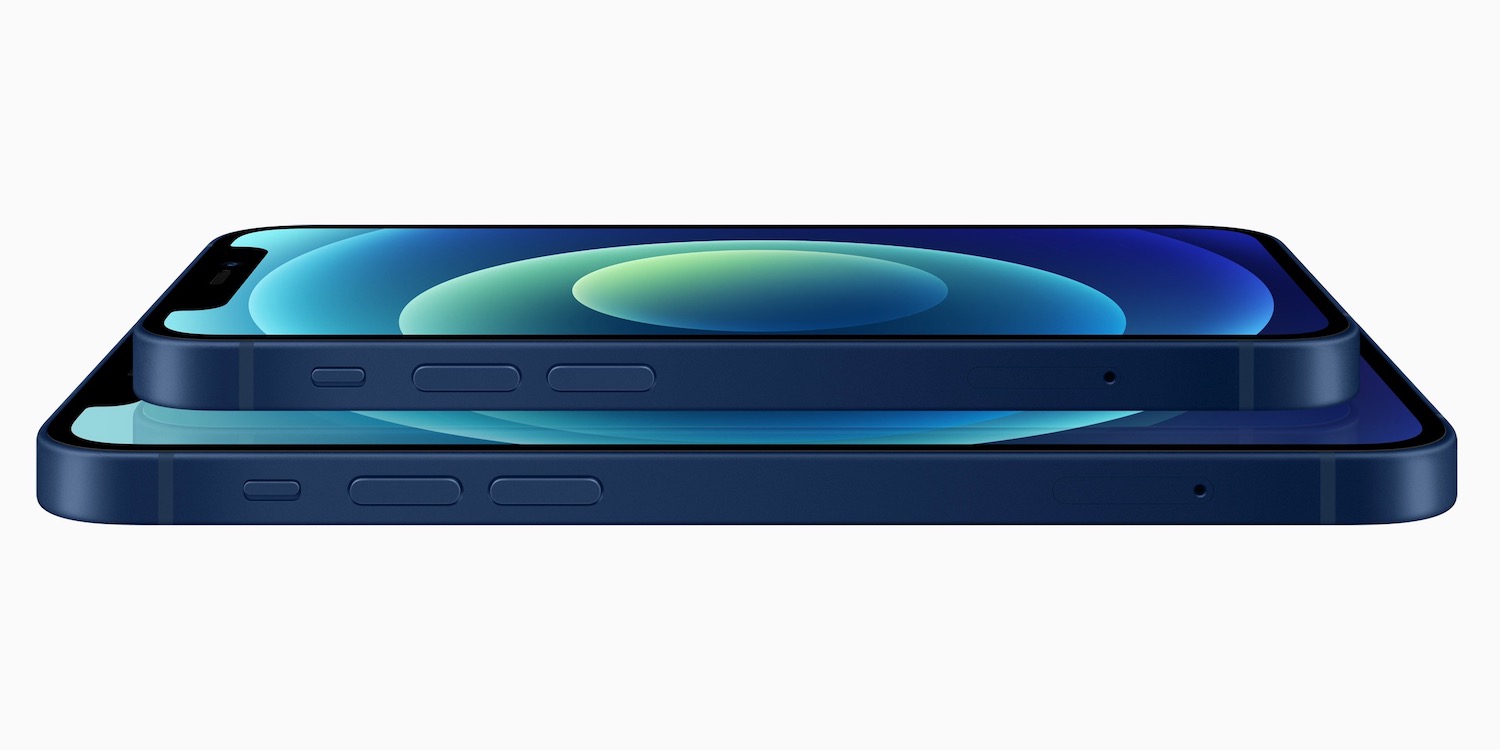Apple launched as many phones at its October 13 “Hi, Speed” event as it ever has. Here’s the full lowdown on the four–strong iPhone 12 family. But first, a quick word on the driving theme that ran right through the event: 5G.
Apple and 5G
Apple’s big theme for the event was 5G, and all of its iPhone 12 handsets will support this next generation mobile network connectivity.
To be brutally honest, this isn’t actually a big deal for most people right now due to limited 5G availability around the world. But just like 4G before it, you can expect Apple’s wholehearted support to massively accelerate 5G’s adoption.
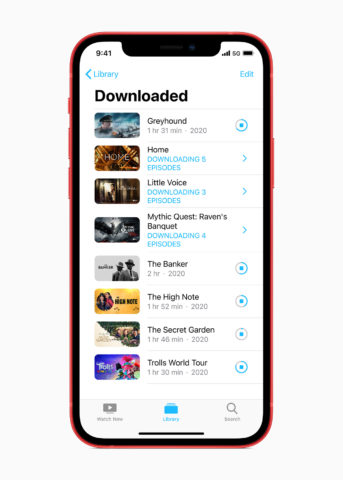
All iPhone 12 models have been engineered with 5G in mind, including a new antenna design and support for the most 5G bands in any phone. Clever software will smartly switch between 4G LTE and 5G depending on the signal strength and use case, which should also serve to maximise battery life.
In the US, the iPhone 12 will support mmWave frequencies for download speeds of up to 4Gbps.
iPhone 12
Just like last year’s iPhone 11, Apple led the way with its non–Pro iPhone. And with reports that the iPhone 12 is going to be the company’s biggest seller, who could blame them?
For the first time since the iPhone X in 2017, we have a new smartphone design language from Apple. There are undoubted similarities with the iPhone 4 and iPhone 5 before it though, with a smooth, flat aluminum frame (in black, white, Product Red, green, and blue) replacing the rounded edges of the post–iPhone 6 era.
Indeed, the iPhone 12 is a much sleeker phone than its predecessor. It’s 15% smaller overall, 11% thinner, and 16% lighter. It might seem more delicate, but its display is coated with a new proprietary Ceramic Shield glass that fared four times better than rivals in drop tests.
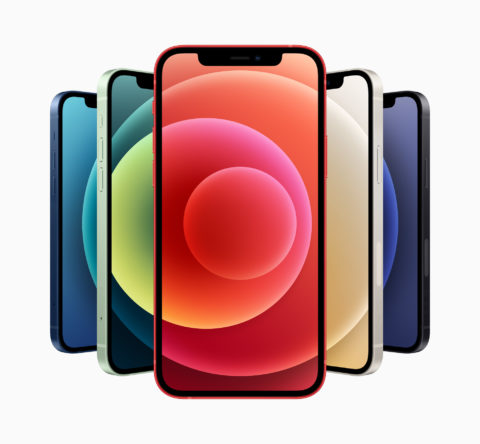
Underneath that toughened glass (if it can be called that) is the same–sized 6.1–inch display as the iPhone 11. Even here, though, there’s been a major improvement. Apple has gone all in on OLED, ditching LCD technology for the same kind of Super Retina XDR display that you’ll find in the Pro.
Along with much better contrast and deeper blacks than the iPhone 11, the iPhone 12 display packs in double the pixels at 2532 x 1170 and 460 ppi. It gets plenty bright too at 1200 nits, which altogether enables support for Dolby Vision, HDR 10, and HLG.
Like every phone in the iPhone 12 range, not to mention the latest iPad Air, the iPhone 12 runs on Apple’s latest A14 Bionic chip. Built using a 5nm standard and comprised of a 6–core CPU and a 4–core GPU, it’s the fastest smartphone chip around by a factor of 50 percent. It’s also a major leap over the A13 Bionic, with 40% more transistors and double the Neural cores.
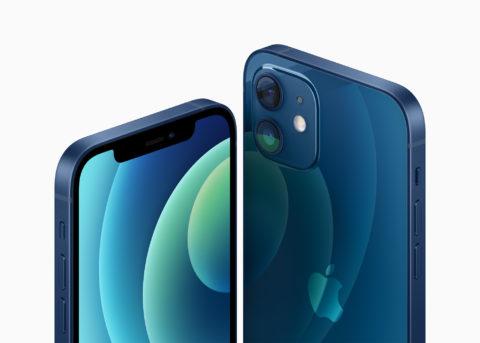
The iPhone 12 packs a dual–camera system comprised of a 12–megapixel wide sensor and a 12–megapixel 120 degree ultra wide sensor. The main camera sports an unusually bright f/1.6 aperture, which will let significantly more light in than usual. Together with a seven element lens, there’s a 27% improvement to low light performance.
Talking of low light performance, Apple’s spookily crisp Night mode now comes to every single camera across the iPhone 12 range – including the front camera. Night time selfies will never be the same again.
Apple has implemented a new MagSafe standard across the iPhone 12 range. If that name sounds at all familiar, it’s probably because you owned a pre–USB–C MacBook at some point. MagSafe was the name of the revolutionary magnetised charging standard that snapped the wire into place.
Sure enough, MagSafe uses magnets to snap compatible chargers (up to 15W) to the back of the phone in perfect alignment. But it’s also the start of a new ecosystem of magnetized Apple and third–party accessories, including wallets, folding chargers, and smart sleeves.
The new design and 5G connectivity have brought about a significant price bump for the iPhone 12. Prices start from $799 for the 64GB model, then move to to $849 for 128GB and $949 for 256GB. That’s a $100 increase across the board compared to the iPhone 11.
iPhone 12 Mini
It felt like Apple didn’t give it as much dedicated air space as the rest of the iPhone 12 family, but the iPhone 12 Mini is much more interesting than its entry–point status would suggest.
This brand new iPhone line finally answers the call of those who bemoan the supersizing of smartphones. It’s both smaller (131.5 x 64.2 x 7.4mm) and lighter (135 grams) than the iPhone SE, but it packs in a larger 5.4–inch edge–to–edge OLED display with a 2340 x 1080 resolution.
Indeed, while it might be significantly smaller than the iPhone 12, the iPhone 12 Mini is essentially identical in every other regard. It has the same fresh design with the same color options, the same A14 Bionic CPU, the same dual–camera system, the same storage options, and the same MagSafe technology.
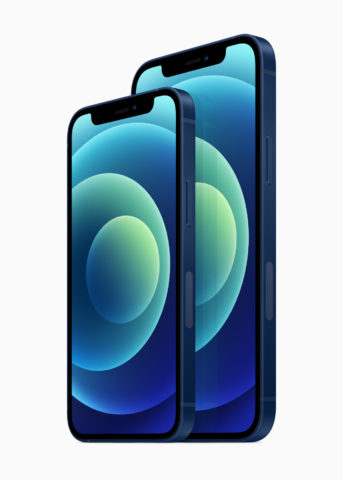
The iPhone Mini also shares the same 5G connectivity as its big brother, which results in what Apple calls the “smallest, thinnest, and lightest 5G smartphone in the world”.
All four iPhone 12 handsets share the same IP68 rating, so are equally water and dust resistant.
Another point that affects all four iPhone 12 models: there’ll be no more AC adapters or earphones bundled in, resulting in smaller boxes across the line. And in the case of the iPhone 12 Mini, that’s going to be ridiculously small.
‘Similar but smaller’ seems to be the operative phrase with the iPhone 12 Mini, and that applies to the prices. The entry–level 64GB model will cost $699, the 128GB model $749, and the 256GB model tops out at $849. If that sounds familiar, it’s same pricing as last year’s iPhone 11 – a much bigger, but also a much lesser phone.
iPhone 12 Pro
Last year saw Apple introducing the Pro–line with the iPhone 11 Pro, and the iPhone 12 Pro continues in a similar vein with flashy new finishes and superior camera tech. But it’s arguably a little less interesting within the context of the wider iPhone 12 family.
Once again Apple has switched up from aluminum to surgical grade stainless steel for the Pro, with shiny silver, graphite, gold, and pacific blue finish options. The basic design, though, is very much the same as the flat–edged iPhone 12.
Interestingly The display of the iPhone 12 Pro looks to be the same as the iPhone 12, which is a 6.1–inch Super Retina XDR display OLED with a 2532 x 1170 resolution. This represents a bump up in size from the 5.8–inch iPhone 11 Pro.
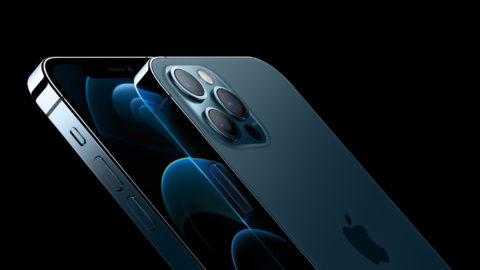
By far the biggest advantage to going with the iPhone 12 Pro over the iPhone 12 lies with the Pro’s triple camera system. You get the same 12–megapixel f/1.6 wide sensor and 12–megapixel ultra wide as the iPhone 12, but you also get a 12–megapixel 2X telephoto camera for zoomed shots.
Also exclusive to the Pro line is a LiDAR sensor, which we first saw in the latest iPad Pro. While it has the potential to enhance AR, its most useful application here will be in improving autofocus speeds and depth information in low–light scenarios. Indeed, the presence of LiDAR has enabled Night mode portraits to become a thing.
One camera trick that all four iPhone 12 models will gain is Smart HDR 3, which automatically refines highlights, shadows and contours.
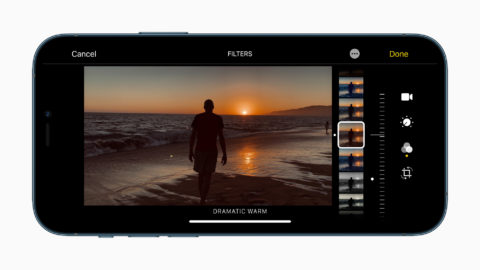
But related to that is an advanced camera feature that’s coming exclusively to the Pro line at some point in the future. Apple ProRAW promises to combine Smart HDR with the RAW format, so you can take fine control over the editing process in Apple or third party apps.
Also exclusive to the Pro family is the introduction of the first ever end–to–end Dolby Vision video experience in a camera, which promises to capture sharp HDR footage at up to 60 fps.
Night mode Time–Lapse promises to improve those light trails in night time conditions when using a tripod, while Deep Fusion also comes to all four cameras in the Pro range.
There’s been no price bump on the Pro line this year, and the entry–level models come with double the storage. This means that you get 128GB for $999, while the 256GB model costs $1099 and the 512GB model will set you back $1299.
iPhone 12 Pro Max
It shouldn’t surprise you to learn that the iPhone 12 Pro Max looks and performs much like the iPhone 12 Pro, only bigger. At 160.8 x 78.1 x 7.4mm and 228g, it’s a little bigger (though thinner) than the iPhone 11 Pro Max.
The iPhone 12 Pro Max runs on the same A14 Bionic CPU as the rest, and it sports the same flat–edged design. Its shiny stainless steel frame finishes are the same as the Pro.
But that’s not the whole story with this this year’s Max model by any stretch of the imagination. Its display and cameras are notably different from the rest.
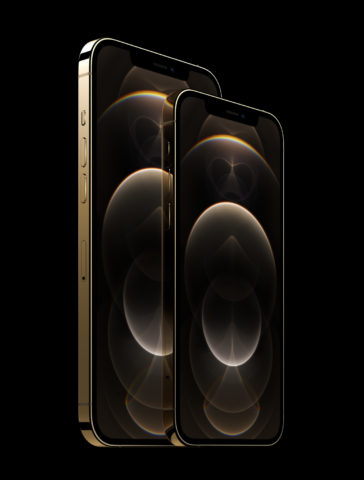
While the iPhone 12 and iPhone 12 Pro share a screen, the 6.7–inch Pro Max display is unique in being the largest iPhone display ever. It packs in more pixels than ever, thanks to a 2778 x 1284 resolution.
On the camera front there are some notable differences from even the iPhone 12 Pro. While it too has a triple camera system with 12–megapixel wide, ultra wide, and telephoto sensors, the former and latter have received some upgrades.
The wide camera’s image sensor is 47% larger, which produces bigger pixels and produces 87% better low light performance. It also benefits from optical image stabilization (OIS) on the image sensor itself, not merely the lens, resulting in steadier shots. Meanwhile, the telephoto lens zooms to 2.5x, which betters the iPhone 12 Pro’s 2x.
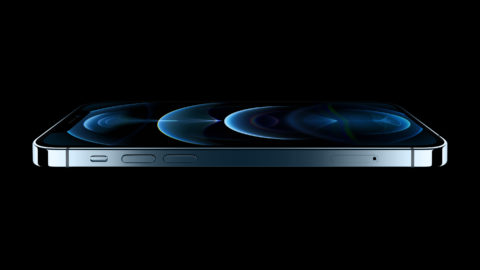
Naturally, the Max gets the camera features that are unique to the Pro line, including Apple ProRAW, Dolby Vision video, Night mode portraits (helped by that LiDAR sensor), Night mode Time–Lapse, and Deep Fusion for all four cameras.
Again, the iPhone 12 Pro Max pricing stays the same as last year’s equivalent, but with double the storage for the entry model. The 128GB model starts at $1099, the 256GB costs $1199, and the 512GB costs $1399.
